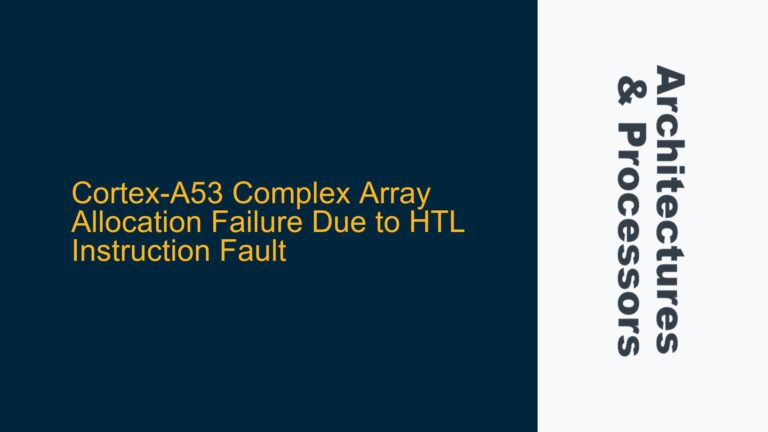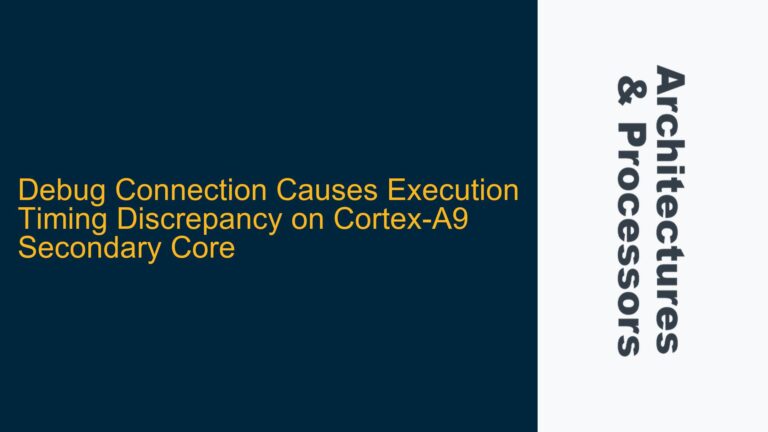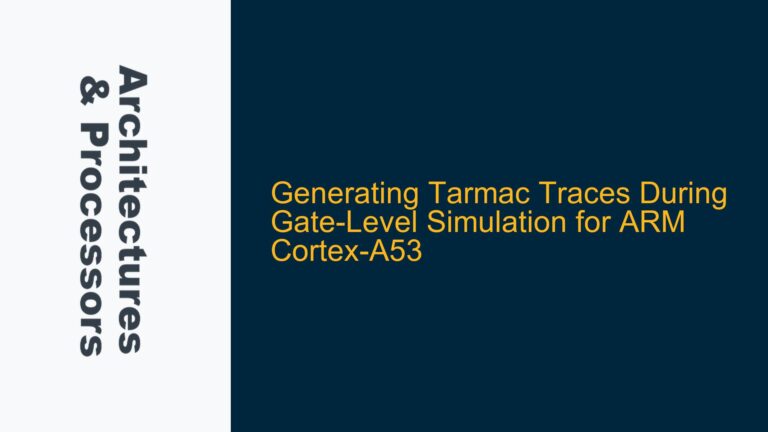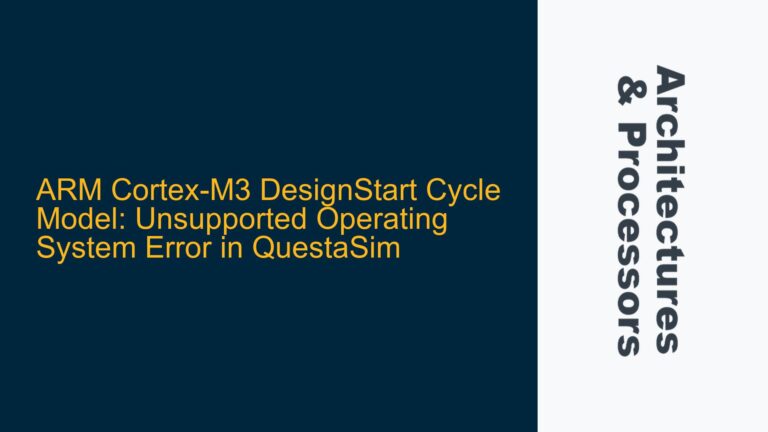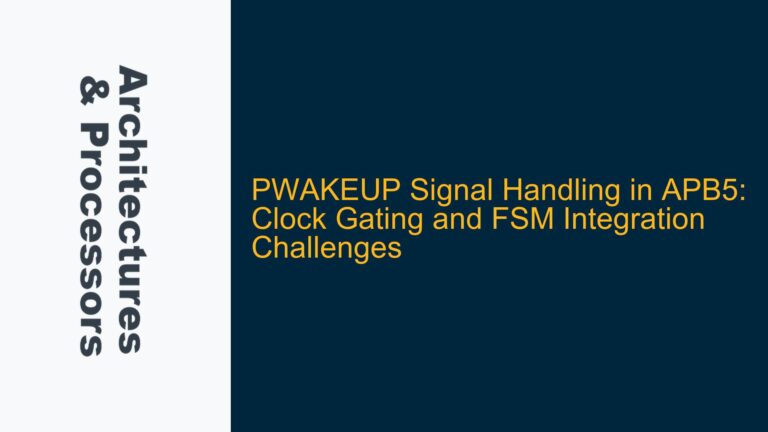AxCACHE Attributes and Their Impact on Write Merging and Read Prefetching
The AxCACHE signal in AMBA AXI protocols is a critical attribute that governs the behavior of transactions, particularly in terms of write merging and read prefetching. AxCACHE is a 4-bit signal associated with each transaction, and its bits control various aspects of memory access, including cacheability, bufferability, and transaction optimization. The most significant bit, AxCACHE[1], is particularly important as it determines whether a transaction is modifiable, which directly impacts the ability to merge writes and prefetch reads. Understanding the nuances of AxCACHE is essential for designing efficient and compliant AXI-based systems.
In AMBA AXI4, AxCACHE[1] is referred to as the "Modifiable" bit. When AxCACHE[1] is set to 1, the transaction is targeting Normal memory, which allows for optimizations such as write merging and read prefetching. Conversely, when AxCACHE[1] is set to 0, the transaction is targeting Device memory, which typically has side effects and thus prohibits such optimizations. This distinction is crucial for ensuring correct system behavior, especially in systems where memory-mapped peripherals and FIFOs are involved.
Write merging is a powerful optimization technique that allows multiple write transactions to be combined into a single transaction. This is particularly useful in systems with high write traffic, as it reduces the number of transactions on the bus, thereby improving bandwidth utilization and reducing latency. However, write merging is only permissible when AxCACHE[1] is set to 1, as merging writes to Device memory could lead to incorrect behavior due to side effects. For example, writing to a FIFO or a memory-mapped register might have side effects that are not preserved if the writes are merged.
Read prefetching is another optimization technique that allows the system to anticipate future read requests and fetch data in advance. This can significantly reduce read latency, especially in systems with high read traffic. However, read prefetching is only safe when AxCACHE[1] is set to 1, as prefetching from Device memory could lead to incorrect behavior. For example, reading from a FIFO might remove data from the FIFO, and prefetching could result in data being lost or corrupted.
Modifiable Bit (AxCACHE[1]) and Its Role in Transaction Optimization
The Modifiable bit (AxCACHE[1]) plays a central role in determining whether a transaction can be optimized through write merging or read prefetching. When AxCACHE[1] is set to 1, the transaction is targeting Normal memory, which is typically used for general-purpose data storage. Normal memory does not have side effects, meaning that multiple transactions can be safely merged or prefetched without affecting the correctness of the system.
For example, consider a system with a 64-bit data bus and three separate byte write transactions to addresses 0x0, 0x4, and 0x5. If AxCACHE[1] is set to 1, these three byte writes can be merged into a single 64-bit write transaction. The write strobes (WSTRB) would be used to indicate which bytes are valid, and the transaction would be completed in a single cycle, thereby reducing bus congestion and improving performance.
On the other hand, if AxCACHE[1] is set to 0, the transaction is targeting Device memory, which typically includes memory-mapped peripherals, FIFOs, and other devices with side effects. In this case, write merging is not allowed, as merging writes could lead to incorrect behavior. For example, writing to a FIFO might involve side effects such as updating the FIFO’s write pointer, and merging writes could result in the pointer being updated incorrectly. Similarly, read prefetching is not allowed when AxCACHE[1] is set to 0, as prefetching could lead to data being lost or corrupted.
The distinction between Normal memory and Device memory is critical for ensuring correct system behavior. Normal memory is typically used for general-purpose data storage, where the order of transactions and the exact sequence of writes and reads are not critical. Device memory, on the other hand, is used for memory-mapped peripherals and other devices where the order of transactions and the exact sequence of writes and reads are critical. For example, writing to a FIFO might involve side effects such as updating the FIFO’s write pointer, and reading from a FIFO might involve side effects such as removing data from the FIFO.
Implementing Correct AxCACHE Settings for Write Merging and Read Prefetching
To implement correct AxCACHE settings for write merging and read prefetching, it is essential to understand the memory map of the system and the nature of the memory regions. Normal memory regions, which are typically used for general-purpose data storage, should have AxCACHE[1] set to 1 to allow for write merging and read prefetching. Device memory regions, which are typically used for memory-mapped peripherals and other devices with side effects, should have AxCACHE[1] set to 0 to prohibit write merging and read prefetching.
For example, consider a system with the following memory map:
| Memory Region | Address Range | Type | AxCACHE[1] |
|---|---|---|---|
| SRAM | 0x0000_0000 – 0x0000_FFFF | Normal | 1 |
| UART | 0x1000_0000 – 0x1000_0FFF | Device | 0 |
| FIFO | 0x2000_0000 – 0x2000_0FFF | Device | 0 |
In this system, the SRAM region is used for general-purpose data storage and should have AxCACHE[1] set to 1 to allow for write merging and read prefetching. The UART and FIFO regions, on the other hand, are used for memory-mapped peripherals and should have AxCACHE[1] set to 0 to prohibit write merging and read prefetching.
When designing the system, it is important to ensure that the AxCACHE settings are correctly configured for each memory region. This can be done by setting the AxCACHE signal in the AXI master interface based on the address of the transaction. For example, if the transaction address falls within the SRAM region, the AxCACHE[1] bit should be set to 1. If the transaction address falls within the UART or FIFO regions, the AxCACHE[1] bit should be set to 0.
In addition to setting the AxCACHE signal correctly, it is also important to ensure that the system is designed to handle the optimizations enabled by AxCACHE[1]. For example, if write merging is enabled, the system should be designed to handle merged write transactions correctly. This might involve using write strobes (WSTRB) to indicate which bytes are valid in a merged write transaction. Similarly, if read prefetching is enabled, the system should be designed to handle prefetched read transactions correctly. This might involve using a prefetch buffer to store prefetched data and ensure that it is returned to the correct read transaction.
In conclusion, the AxCACHE signal is a critical attribute in AMBA AXI protocols that governs the behavior of transactions, particularly in terms of write merging and read prefetching. The Modifiable bit (AxCACHE[1]) plays a central role in determining whether a transaction can be optimized through write merging or read prefetching. To implement correct AxCACHE settings, it is essential to understand the memory map of the system and the nature of the memory regions. By setting the AxCACHE signal correctly and designing the system to handle the optimizations enabled by AxCACHE[1], it is possible to achieve significant performance improvements while ensuring correct system behavior.


